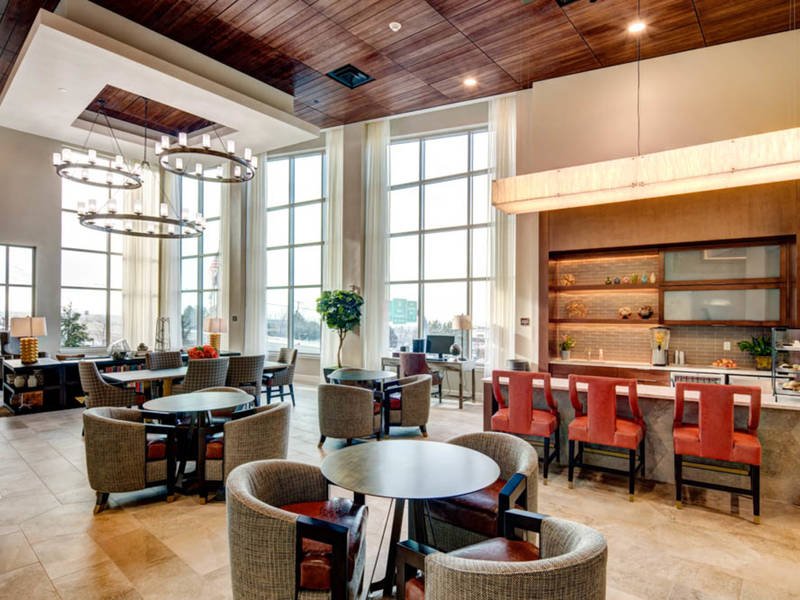Above: Seating arrangements can promote socializing. (Catalina Design Group)
Healthy environments are a fundamental right of all people, and we owe it to senior generations to provide a safe and adequate standard of living. From big-picture programming and promoting safety in spatial design, to details like ergonomic comfort, the impact of design decisions spreads beyond the individual receiving care. Ultimately, promoting healthy environments for seniors supports the needs of the individual, their family, their caretakers, and the community.
On the whole, today’s seniors and their families are seeking environments that support well-being at all levels of care. Independent Living and Assisted Living residents, for instance, benefit from spaces that promote individual choice, meaningful activity, and socialization. These more independent seniors are best served by encouraging individuals to take ownership of their personal wellness and by creating an overall sense of community. On the other hand, Skilled Nursing and Memory Care residents, whose medical care may vary greatly, both require a focus on safe and stimulating activities. Natural daylight and outdoor views are especially important for physical wellness and psychological health. Memory Care residents, in particular, most benefit from the improved temperament achieved with a properly regulated circadian rhythm. Holistically assessing the programming needs for each level of care is the first step in creating an environment that supports the well-being of all who enter the community.

Once a solid understanding of the community’s programming needs has been established, spatial design and finish selections are the next critical steps in the design process. Most notably, Memory Care design has a number of unique solutions for keeping residents safe and content.
- By planning a Memory Care unit that avoids dead-end hallways and also includes safe access to a single interior courtyard, residents experience markedly reduced agitation
- By repeating finishes and furnishings between Memory Care wings, residents who may be relocated often remain calm in their new environment which feels familiar
- Utilizing dark flooring selections can deter residents from entering areas that are unsafe for them, as the aging eye can interpret a dark horizontal flooring surface as though it were an actual hole in the ground.
Considerations such as these promote wellbeing and limit discomfort, creating an environment in which seniors and those who care for them can thrive.
Upon finalizing the community’s programming needs, space plan, and building finishes, the last design decisions determine how the building will be furnished,
- Proper ergonomic support and moisture technology on seating surfaces are critical for safety, comfort, and durability that will serve the community long-term
- Memory boxes placed outside of an individuals room can be filled with personal photos and memorabilia to signify where their room can be found, rather than committing room numbers to memory
- Memory Care residents can greatly benefit from interactive artwork, green walls, and lifecare stations. These lifecare stations, produced by companies like Artline, highlight a single activity or pastime, like gardening, fishing, or tinkering with tools, and spark memory while refining motor skills
Furnishings and other items that residents will be closely interacting with each day require just as much consideration as high-level design decisions.

Through effective execution of large-scale and detail-oriented solutions, today’s seniors experience the standard of living that they rightfully deserve. Safe and supportive senior communities that follow principles such as these allow family members to build balanced lives that are free from the obligation of home care, provide safe working environments for professional caregivers, and can alleviate medical resources to better serve the larger community. In today’s world, many younger generations are currently impacted by seniors in one way or another. By continuing to build upon the understanding of seniors’ essential needs, we can ensure that this standard of living will be upheld for ourselves and our loved ones for generations to come.
Sarah Melaney | Interior Designer
